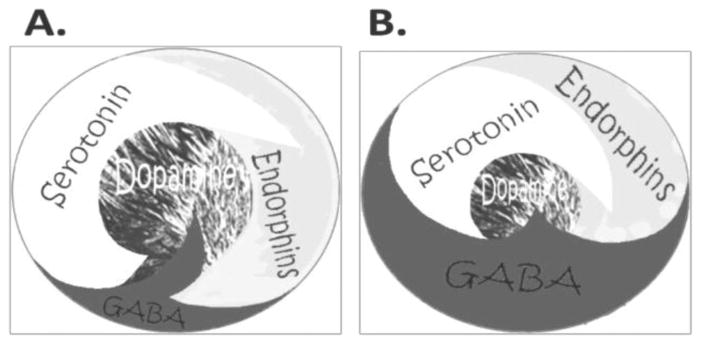FIGURE 1. Brain Reward Cascade.

Figure 1(A) represents the normal physiologic state of the neurotransmitter interaction at the mesolimbic region of the brain. Briefly, in terms of the brain reward cascade: serotonin in the hypothalamus stimulates neuronal projections of methionine enkephalin in the hypothalamus, which in turn inhibits the release of GABA in the substania nigra, thereby allowing for the normal amount of dopamine to be released at the nucleus accumbens (reward site of the brain). Figure 1(B) represents hypodopaminergic function of the mesolimbic region of the brain. It is possible that the hypodopaminergic state is due to gene polymorphisms as well as environmental elements including both stress and neurotoxicity from aberrant abuse of psychoactive drugs (e.g., alcohol, heroin, cocaine etc.). Genetic variables could include serotonergic genes (serotonergic receptors [5HT2a]; serotonin transporter 5HTlPR); endorphinergic genes (mu OPRM1 gene; proenkephalin [PENK, PENK polymorphic 3′UTR dinucleotide (CA) repeats]; GABergic gene (GABRB3), and dopaminergic genes (ANKKI Taq A; DRD2 C957T, DRD4 7R, COMT Val/met substation; MAO-A uVNTR; and SLC6A3 9 or 10R). Any of these genetic and/or environmental impairments (over-administration of L-glutamate or IV GABA) could result in reduced release of DA or a reduced number of dopaminergic receptors (Blum et al. 2010a with permission).
